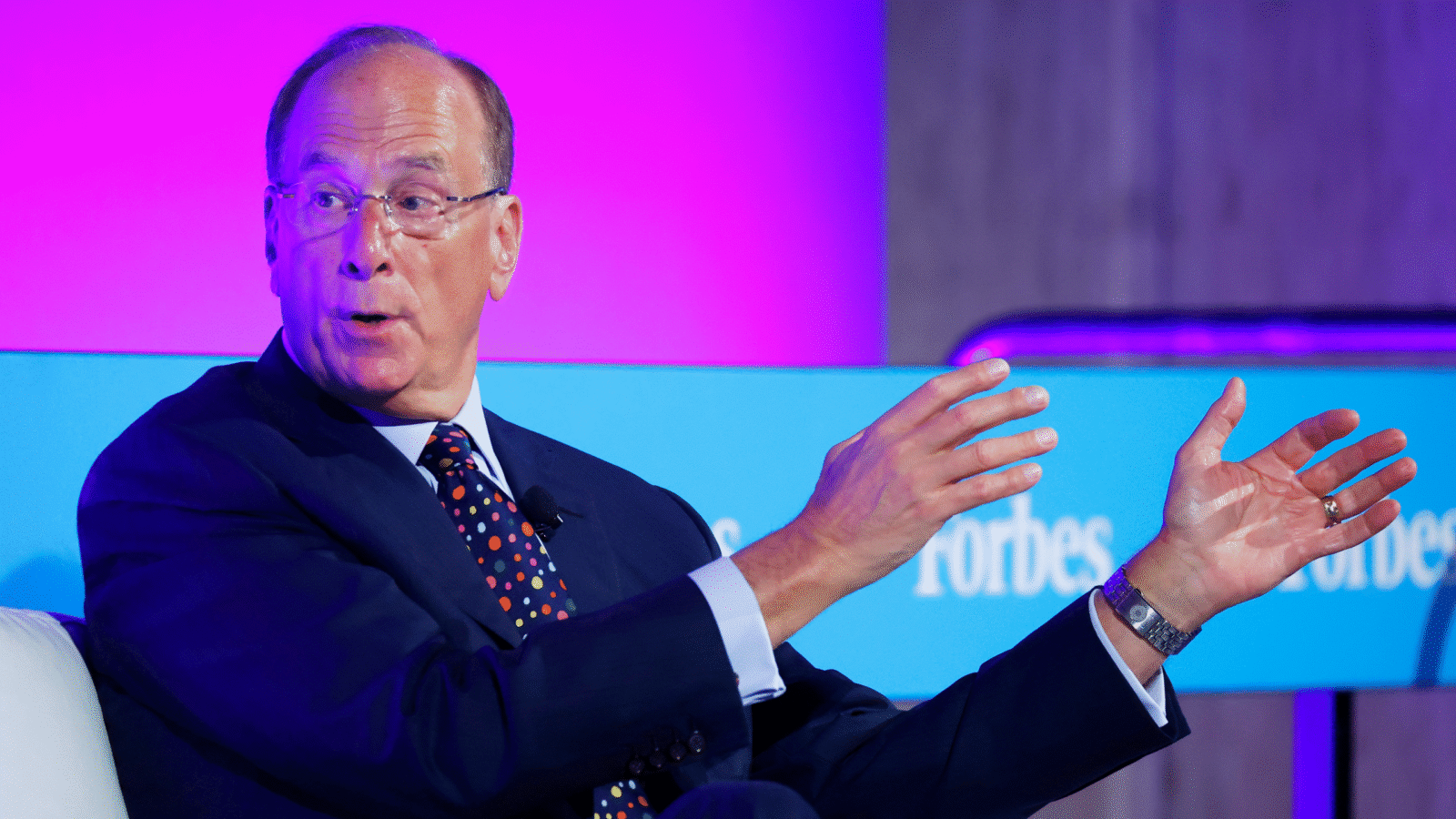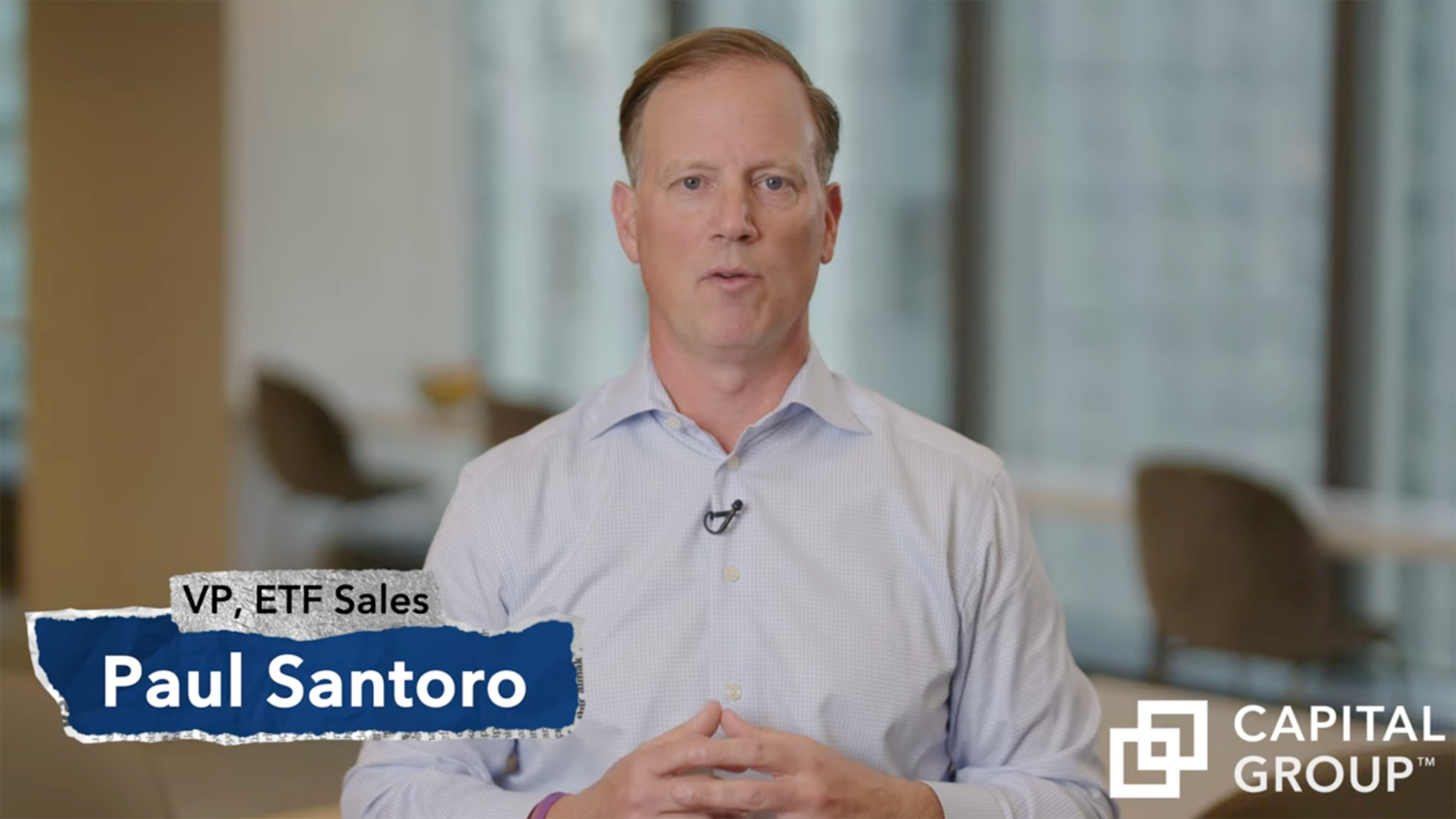Good morning, and happy Monday, which is also National Suspenders Day. If anyone’s planning to be Gordon Gekko for Halloween but hasn’t ordered a set, there’s still time.
While we’re on the subject of making a quick buck, there was some curious trading recently in the UK-domiciled Invesco AT1 Capital Bond UCITs ETF. A quick influx of cash last week brought its total assets to nearly $1.3 billion, Bloomberg reported. The timing of that coincided with a Swiss court ruling that a massive writeoff of Credit Suisse additional tier one (AT1) bonds following the 2023 UBS Group takeover was unlawful, according to the publication. The Invesco ETF includes some of those Credit Suisse bonds, and though the value is listed as zero, at least a few people expect that to change.
As the famous Gekko said, “We pick that rabbit out of the hat while everybody sits out there wondering how the hell we did it.”
BlackRock’s Tokenized ETFs Are Only The Beginning, CEO Says

Tokenization was once just a whisper in the wind. Now, it’s a scream.
Investment giant BlackRock, which boasts more than $13 trillion in assets under management, has made tokenized ETFs a top priority, CEO Larry Fink confirmed on an earnings call last week. Fink, who said that the crypto industry is set to grow “rapidly,” is calling for more regulatory clarity as his firm builds up the technology required to tokenize both its ETFs and traditional securities. The move is the latest by one of the industry’s largest issuers to merge the worlds of traditional and decentralized finance and bring tokenization — and with it, instantaneous transactions — to the mainstream. The hurdle for issuers remains a lack of guidance, experts said.
“The challenge with all the various tokenization projects to get ETFs or stocks on the blockchain is that we don’t actually have a legal structure to allow this,” said Dave Nadig, director of research at ETF.com. “What there aren’t right now are clean legal and regulatory rails for this kind of activity … I’m not holding my breath.”
Taking a Page from Prometheus’ Playbook
While BlackRock’s move to tokenize ETFs would be a significant step toward decentralized finance, issuers are still some distance away from fully on-chain securities, said Aaron Kaplan, founder and co-CEO of Prometheum. Although having digital representations of ETFs can speed up the transaction process, it still wouldn’t allow for immediate movement of the underlying stocks, which remain off-chain. Another roadblock is the lack of infrastructure and cybersecurity safeguards, Kaplan added, particularly if on-chain assets are going to be held digitally by a custodian. “You have to have the cybersecurity, the blockchain technology, the operational security — everything else that’s required in order to protect the keys,” Kaplan said. “Because in the event that the actual custodian gets hacked, they could take those [on-chain] assets and make them disappear.”
Still, Kaplan predicts tokenized on-chain assets, which now account for more than $30 billion, will soon be sold in public markets, particularly as agencies continue signaling their support. Issuers’ concerns about receiving a regulatory letter if they tried using blockchain have dissipated since the Trump administration came into office, he added. “When it comes to securities, you have to have the proper licenses and the technology to conduct such activities,” he said. “[This is] as opposed to the cryptocurrency space, which has been a little bit more Wild West-y.”
Just Around the Corner. Really. As the ETF industry enters a transitional period, with markets moving from electronic to digital transactions, Kaplan anticipates that expanding on-chain trades beyond crypto products is coming — probably in the fourth quarter of 2025 or early 2026. “Initial use cases will be ETFs of bundles of underlying cryptocurrencies,” Kaplan said. “As more assets move on-chain, you’ll be able to create additional ETF products and other structured products and the like … It just makes paramount sense.”
Three Reasons Active ETFs May Boost The Value Prop Of Your Business

Capital Group’s Paul Santoro believes it comes down to a few core concepts: choice, diversification, and value.
All of them, though, are rooted in the same core principle: showing your value as an advisor by giving your clients the best chance to outperform the broader market over long stretches of time.
Capital Group’s suite of ETFs is built on that foundation: equipping advisors with tax efficient solutions coupled with active management that pursues better-than-market results.
Get a handle on Capital Group’s active approach to ETFs.
Capital Client Group, Inc.
Betting Big on Leveraged ETFs
Is anyone willing to bet that 3x- or 5x-leveraged ETFs will be approved by the SEC?
After all, there is a prediction market bet available via Polymarket that a Litecoin ETF will get a green light from the regulator by the end of the year. There’s no such wager listed for the glut of leveraged exchange-traded funds recently filed by several issuers … yet. Currently, the odds probably wouldn’t be great. Last week, shortly after Volatility Shares filed for numerous 3x- and 5x-leveraged ETFs, the SEC’s director of the division of investment management, Brian Daly, told Reuters that it’s “unclear whether these ETFs would comply with the Derivatives Rule (Rule 18f-4), which generally limits leverage to 2x.”
Anybody Home?
It may be simply a coincidence that the deluge of risky product filings happened amid the federal government shutdown. While companies can make filings in the Securities and Exchange Commission’s EDGAR system, no one is approving or denying products. That’s notable, as the regulator typically has 75 days from a prospectus filing to disapprove, or funds can proceed by default. Still, even if any of the funds make it through the application process, their success is hardly guaranteed:
- Distribution may be a challenge, as some trading platforms will avoid making them available. Vanguard, for example, doesn’t allow any leveraged or inverse ETFs. Webull, which does make them available, notes that they are often used during volatile periods as an alternative to options.
- Dozens of leveraged-single stock and crypto ETFs floated by Direxion, Volatility Shares, LevMax, Defiance, Themes and ProShares would be competing with one another. The funds are designed for intraday trading, meaning that assets wouldn’t stick around in them for very long.
- Funds that don’t get much scale, perhaps at least $100 million, may not be profitable. Issuers know this, and it’s pretty much a given that they expect at least some of their ETFs to flop.
Sign of the Times: At a time when people can (and do) bet on the outcome of almost anything, it seems logical for the makers of financial products to cater to that trend. Even so, prospective buyers of any leveraged ETFs should be well aware of the risks. They should be thought of as trading tools, not investments, Draco Evolution CEO Jack Fu said in a statement. “If someone insists on using them, I suggest strict position sizing under 1-2% of a portfolio, predefined time limits measured in days not months, and hard exit rules,” he said. “For crypto-linked versions, I would add an extra margin of safety because overnight moves can overwhelm stop-losses.”
Beyond the directional risks endemic to the products is another issue, which is the drag stemming from the rolling of futures contracts, or “roll decay,” said Micheal Martin, vice president of Market Strategy at TradingBlock. To highlight that, he pointed to the one-year returns of the Direxion Daily S&P 500 Bull 3X Shares (SPX), at about 22%, and the SPDR S&P 500 ETF Trust (SPY), about 14%. “You might expect the leveraged fund to return three times that amount, or about 41%,” he said. “In reality, it’s far lower.”
VanEck Adds ETFs to Get Around Concentration Rules

In the age of billionaires like Elon Musk, Larry Ellison and Jeff Bezos, and the outsize companies they lead: Market-cap weighted indexes are out of whack.
Or more diplomatically, they’re highly concentrated. One theme this year has been the rise of equal-weight ETFs and similar funds that help investors diversify beyond the big names. But that hasn’t helped RIAs tracking uncapped benchmarks, as concentration limits have kept index funds from allocating more than 25% to any one security or 50% in total among all securities with 5% or more of assets. One issuer, VanEck, has been working on a line of sector ETFs designed to get around those limits and still comply with federal rules for registered investment companies; the products offer “truer exposure to these sectors that investors are looking for,” says the company’s director of product management, Mike Cohick.
Truthiness
The company launched its first two TruSector ETFs in August, with one focused on technology and the other on consumer discretionary. It has a third for communication services that can go live whenever the company wants, and VanEck filed earlier this month for an expanded suite of others. Currently, it’s testing demand and is considering launching the communications sector ETF, Cohick said. “We’re working with our client partners to assess demand like we do for any ETF launch,” he said.
The ETFs reflect market cap weightings by investing in individual stocks and other ETFs. “We’re owning the securities in a sector up to the [Registered Investment Company] weights,” Cohick said. “In order to get the full market cap weight of a stock … our portfolios will own a nonproprietary ETF in that sector.” That works, since the SEC and IRS rules don’t require a “look through” of the holdings of ETFs within other ETFs, he said. For example, the VanEck Technology TruSector ETF (TRUT), has 16% of assets in Nvidia, 14% in Microsoft, 13% in Apple and 44% in the Technology Select Sector SPDR Fund (XLKI).
A look at some of the others:
- The Consumer Discretionary TruSector ETF (TRUD) has 20% in Amazon, 6% in Tesla and 71% in the Consumer Discretionary Select Sector SPDR Fund (XLY).
- The ETFs it filed for on Oct. 10 cover energy, financials, healthcare, industrials, materials, real estate and utilities.
Here’s an Idea: An asset manager that runs separately managed accounts introduced the concept to VanEck, which ran with it. Indexes have been forced to underweight the largest companies and overweight some of the smaller ones in order to comply with the concentration rule, Cohick said. “The worst of the worst is information technology, because it’s such a big part of the S&P 500.”
Extra Upside
- This Means War: A look at a spending spree benefitting defense and aerospace ETFs.
- Gold Rush: What the historic price could mean for the 60/40 portfolio.
- Active ETFs May Help Advisors Stand Out. Do you have clients who could benefit from more than a passive, hands-off approach? Consider active ETF model portfolios that seek to give your clients the opportunity for better than market results over the long term. See if active ETF model portfolios are right for your clients.*
* Partner
ETF Upside is written by Emile Hallez. You can find him on LinkedIn.
ETF Upside is a publication of The Daily Upside. For any questions or comments, feel free to contact us at etf@thedailyupside.com.

